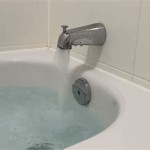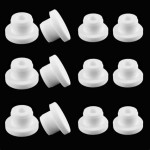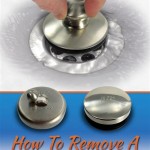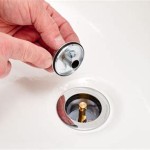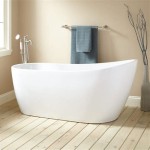Why Is Water Still Coming Out Of My Bathtub Faucet When I Turn On The Shower?
Experiencing water continuing to flow from the bathtub faucet after switching to the shower can be perplexing. While a minor inconvenience for some, it can indicate underlying plumbing issues that require attention. Several factors can contribute to this problem, ranging from simple fixes to more complex internal component failures.
One of the most common culprits is a worn-out diverter valve. This valve is the central component responsible for redirecting water flow between the bathtub faucet and the showerhead. Over time, the internal seals and components of the diverter can degrade due to mineral buildup, corrosion, or general wear and tear. When this happens, the valve may not fully seal, allowing water to continue flowing through the bathtub spout even when diverted to the showerhead.
Diverter valves come in several varieties, each with a slightly different mechanism. Three common types include a three-valve diverter, a two-valve diverter with a separate shower control, and a single-lever diverter. Three-valve diverters utilize a separate lever specifically for diverting the water. Two-valve diverters often use a pull-up knob on the faucet spout to divert the water. Single-lever diverters integrate the diverter function within the main handle that controls both temperature and flow. Identifying the type of diverter is crucial for proper diagnosis and repair.
Another potential cause is a malfunctioning cartridge. Many modern faucets utilize cartridges that control both water flow and temperature. These cartridges contain intricate internal components that regulate the flow pathways. A worn or damaged cartridge can disrupt the intended water diversion, leading to simultaneous flow from both the showerhead and the bathtub faucet.
Mineral deposits can also contribute to this issue. Hard water contains dissolved minerals that can accumulate over time, forming a buildup within the plumbing system, particularly around valves and seals. This buildup can interfere with the proper sealing action of the diverter valve, preventing it from fully redirecting the water flow to the showerhead.
Debris and sediment can also obstruct the diverter valve's operation. Small particles of rust, sand, or other debris can become lodged within the valve mechanism, hindering its ability to seal correctly. This can lead to leakage and prevent complete water diversion to the shower.
Troubleshooting this issue often begins with identifying the type of diverter valve. Once the valve type is determined, further inspection can be performed. For diverters located within the faucet assembly, removing the faucet handle and inspecting the diverter valve for visible damage or mineral buildup is a good starting point. For three-valve diverters, the diverter valve itself might require replacement. For cartridge-style faucets, replacing the entire cartridge may be necessary.
Before attempting any repairs, it is important to shut off the water supply to the bathtub. This typically involves closing the shut-off valves located beneath the sink or behind the access panel for the bathtub plumbing. Once the water supply is off, the faucet handle can be removed to access the diverter valve or cartridge.
Cleaning the diverter valve or cartridge can sometimes resolve the issue. Soaking the components in white vinegar can help dissolve mineral buildup. A soft brush can be used to gently remove any remaining debris. If the components are visibly damaged or worn, replacement is usually the best course of action.
If the problem persists despite cleaning or replacing the diverter valve or cartridge, it's advisable to consult a qualified plumber. The issue might involve a more complex problem within the internal plumbing system, such as a faulty pipe or a problem with the main water supply line. A plumber has the expertise and tools to diagnose and address these more complex issues effectively.
Regular maintenance can help prevent future occurrences of this problem. Periodically cleaning the faucet aerator and showerhead can help remove mineral buildup. Installing a water softener can also help reduce the mineral content in the water supply, mitigating the potential for mineral buildup within the plumbing system.
Addressing this issue promptly can prevent further damage and ensure the efficient operation of the plumbing system. By understanding the underlying mechanisms and potential causes, homeowners can take the appropriate steps to rectify the problem and prevent future recurrence.

Why Does My Faucet Keep Running When I Turn On Shower

Why Does My Faucet Keep Running When I Turn On Shower
Why Does My Shower Faucet Leak When The Water Is Off Quora

Why Does My Faucet Keep Running When I Turn On Shower

Fixing Faucets How Do I Fix Water That Keeps Running In A Tub Faucet

Why Does My Faucet Keep Running When I Turn On Shower

Shower Repair How To Fix A Tub Faucet When Water Comes Out Both Head

Why Is There Water Coming Out Of The Faucet When Shower S On

Why Does My Faucet Keep Running When I Turn On Shower

Easy Fix For Leaking Bathtub Faucet Diverter W Shower
Related Posts

